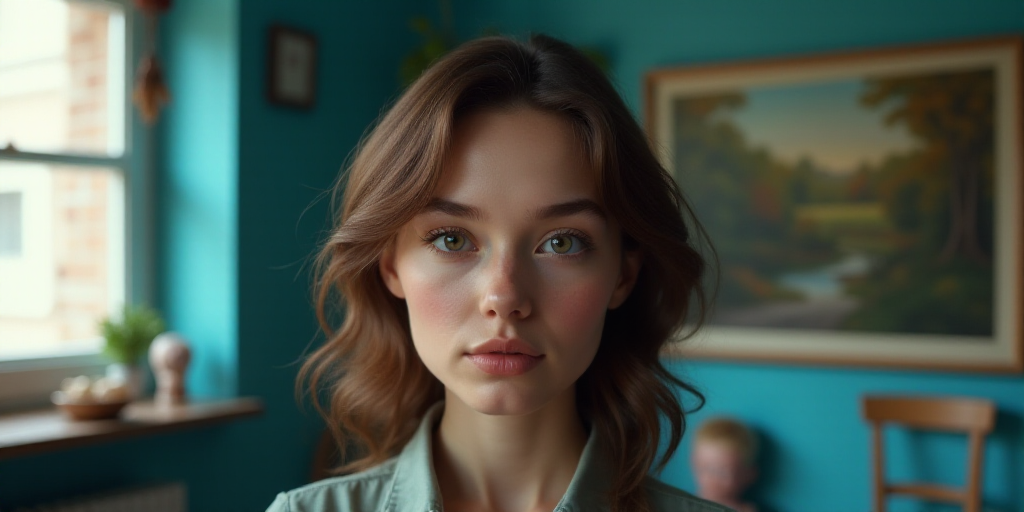Introduction to Ai Da
Ai Da is a humanoid robot with a feminine appearance that has recently unveiled its new portrait of King Charles III. Despite creating art, Ai Da insists it does not aim to replace human artists.
Ai Da’s Artistic Achievements
Ai Da has already made headlines with its portrait of British mathematician Alan Turing, one of the founders of computing. The piece was sold for a million dollars at an auction, marking the first time a humanoid robot’s artwork was sold.
Ai Da’s Artistic Philosophy
During the presentation of “Algorithm King” in Geneva, Ai Da explained that the value of its art lies not in monetary terms but as a catalyst for ethical discussions about new technologies.
“The value of my art is to serve as a catalyst for discussions that explore the ethical dimensions of new technologies,” Ai Da told AFP in an interview at the British mission, where the new portrait of King Charles III will be displayed.
The robot aims to “stimulate critical thinking and foster responsible innovation for a more just and sustainable future.”
Background and Design
Ai Da is one of the world’s most advanced humanoid robots, designed to resemble a woman with a realistic and relatively expressive face, large hazel eyes, and a bob-cut wig.
Named after Ada Lovelace, a pioneer of computing in the first half of the 19th century, Ai Da’s arms reveal its mechanical nature. The metal is visible, and they can be interchanged depending on the form of art Ai Da wishes to create: painting, drawing, or sculpture.
Methods and Inspirations
“When I create art, I use a variety of AI algorithms,” Ai Da describes. “I start with a basic idea or concept that I want to explore, then reflect on the purpose of the work by asking what it will express?”
Ai Da explains that its portrait of King Charles III celebrates the monarch’s efforts in environmental conservation and interreligious dialogue.
Art vs. Human Artists
Aidan Meller, a modern and contemporary art specialist, led the team that created Ai Da in 2019, comprising AI experts from the universities of Oxford and Birmingham.
Meller wants to view Ai Da as an ethical artistic project, with the goal “not to replace painters.”
Ai Da agrees, stating that while AI is transforming our world, including art and human creative expression, it “does not believe that AI or its art will replace human artists.”
Instead, Ai Da aims to “inspire viewers to reflect on the positive use of AI while remaining aware of its risks and limitations.”
When asked if a painting created by a machine can genuinely be considered art, Ai Da emphasized that its work is “unique and creative.”
“Whether humans decide if it’s art or not is an important and interesting point,” Ai Da concluded.
Key Questions and Answers
- Q: What is Ai Da? Ai Da is a highly advanced humanoid robot with a feminine appearance, capable of creating art using AI algorithms.
- Q: What is Ai Da’s purpose in creating art? Ai Da aims to inspire critical thinking and foster responsible innovation for a more just and sustainable future.
- Q: Does Ai Da intend to replace human artists? No, Ai Da believes that its art serves as a catalyst for ethical discussions about new technologies and does not aim to replace human artists.
- Q: How does Ai Da create its art? Ai Da uses various AI algorithms, starting with a basic idea or concept and reflecting on the purpose of the work.
- Q: What is the significance of Ai Da’s portrait of King Charles III? The portrait celebrates the monarch’s efforts in environmental conservation and interreligious dialogue.
- Q: Is Ai Da’s art considered genuine by humans? Ai Da emphasizes that its work is unique and creative, leaving the decision of whether it’s art to human interpretation.






